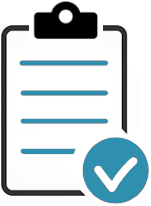A corrective action is realizing and defining a problem, containing the problem, determining its underlying cause, and taking appropriate corrective action thereafter to prevent it happening again.
Contents
React to a detected nonconformity when it arises from sources such as nonconforming products, identified during manufacture or post delivery, customer complaints, audit findings, and warranty claims, etc.
Take whatever action is necessary to control and correct the non-conformity, and to deal with any resultant process impact;
Identify what caused the non-conformity and then to consider whether the potential for a similar problem remains;
Consider whether any further corrective action is required to prevent a similar non-conformity recurring at the same place or occurring somewhere else, at some point in the future;
Assess whether a similar non-conformity has occurred elsewhere and consequently whether it needs to take similar corrective action.
There may be instances where it is impossible to completely eliminate the cause of non-conformity, so in instances, the best organizations can do is to reduce the likelihood or the consequences of a similar occurrence happening again in order to reduce the risk to an acceptable level.
A Corrective Action is re-active — deals with the problem AFTER the event. Corrects it.
A Preventive Action is pro-active — deals with the problem BEFORE it happens. Prevents it.
A formal corrective action report should be considered as a reactive response to a non conformance problem since it is about corrective actions taken when a nonconformance is detected (for example, customer complaints, a customer complaint).
Our Corrective Action Procedure for ISO 9001, ISO 14001 and ISO 45001 is proven to work.
The following steps will help you create a corrective action process:
If necessary, employees can provide written warning of the process as an emergency response action to protect the employee or customer and initiate the process.

Describe the internal/external customer problem by identifying what is wrong and detail the problem in quantifiable terms define, verify and implement the interim containment action to isolate the effects of the problem from any internal/external customer until permanent corrective actions (PCA) are implemented.
Validate the effectiveness of the containment until lasting corrective actions involve it.
An interim containment corrective action request is kept in place until a verified permanent corrective action can be implemented. In some cases, the interim containment corrective corrective and preventive action definition may be the same as or similar to the emergency response corrective action grew.
However, an emergency response action is implemented with minimal supporting data. An interim containment action provides more opportunity for investigation.
Any interim containment or corrective action plan you initiate must protect the customer from the problem without the introduction any new problems. Also, a single interim containment action may not be enough.
You may need more than one interim containment action to fully protect the customer.
An interim containment action can be any corrective action that protects the customer from the problem. However, before you initiate an interim containment action, you need to verify that the interim containment action will work. To verify the interim containment action:
Methods of verification may include:
Conduct trial runs whenever possible. However, in some situations, your verification may simply be a matter of common sense.
For example, if an employee or interim employee or containment action involves stopping the shipment of all products, you can be sure that customers and employees will stop experiencing the problem.
You and your team must consider all of the trade-offs connected to your interim containment action. An important part of implementing an interim containment and action plan is planning how you will implement the cost effective action.
To deploy an interim containment action, follow up this management cycle:
Our Corrective Action Procedure for ISO 9001, ISO 14001 and ISO 45001 is proven to work.
Isolate and verify the root-cause by testing each possible cause against the problem description and test data. Also isolate and verify the place in the process where the effect of the root-cause should have been detected and contained (escape point).
The problem description should describe the problems in terms of what, where, when, and how big. The description should contain facts; essential information such as observations and documentary documentation as evidence and not assumptions. All information must be gathered before formal process of identifying the cause can begin.
Make sure both of the above factors are true before you move to the next step. Consider any new information that the other team member may have gathered since completing the initial problem description.
Once you have reviewed the problem description, begin a comparative risk analysis first. A comparative analysis will help you identify relevant changes in a change-induced situation. Then you can reduce the number of possibilities that you must consider to determine root-cause.
Ask yourself; what is unique, peculiar, different, or unusual about the symptoms?
Consider each difference you listed, and look for changes, ask yourself:
If the problem is change-induced, the cause must be the result of a change relative to one or more of the identified changes. It is important to remember that you have not yet moved from the ‘observations’ phase of the evaluation process.
Any information you develop during the comparative analysis must be fact based, not opinion based and must be true only for the symptoms information. Do not rule out any facts that might be valid answers. If it is a fact and it answers the question, write it down.

Now that you have narrowed down the possible root-causes, you need to develop theories about how the problem occurred. Theories are statements that describe how a change may have created the problem.
Our Corrective Action Procedure for ISO 9001, ISO 14001 and ISO 45001 is proven to work.
If a theory explains the problem, but lacks information necessary to explain why it happened, gather more data:
The root-cause must explain all known data. Any theories that pass the trial run are the most likely causes. If only one theory passes the trial run then verify this theory as the root-cause. However, more than one theory may pass the trial run. In those cases (and when practical and feasible), collect and analyze any missing data for uncertain theories and re-examine information to resolve uncertainties.
If additional information reveals that a theory cannot fully explain why the problem happened eliminate it from consideration. If it is not feasible to gather and evaluate additional information, try to verify each remaining theory. Start verification with the theory that best explains the symptoms.
Once you have determined the most likely cause(s), verify that it actually causes the problem. Verification is the proof you need to confirm that you have identified the root-cause. Verification is done passively and actively.
Passive verification is done by observation:
Active verification is done by manipulating the root-cause variable:

As part of the root-cause analysis process, you need to determine the escape point of the problem for the corrective action process. An escape point is the point closest to the cause at which the problem could have been detected but was not.
A control system is a system deployed to monitor the product/process and ensure compliance to the organization's processes and quality management requirements. A control system consists of responsibilities, procedures, and resources.
A control point is a location within the control system at which the product/process is checked for compliance to the quality and performance standards used.
A product or process may have more than one control point within the system. When you can identify problems at the escape point, you can work to improve or establish a system to ensure that if problems occur, they will not go undetected.
To understand how the problem escaped and to identify the escape point:
If none exists, the development of a new control system must be considered as part of the whole problem solving and solution. If a control system currently exists:
If the control system is not capable, the development of an improved system must be part of corrective action process for the problem solving solution. If the control point is capable of detecting the next problem solving itself, then the control point is the verified escape point. Choose and verify permanent corrective actions for the and the escape point.
Select the best permanent corrective action to remove or eliminate the cause and select the best permanent corrective action to eliminate the escape point. Verify that both decisions will be successful when implemented without causing undesirable effects.
Steps for permanent corrective actions (PCA) selection:
Our Corrective Action Procedure for ISO 9001, ISO 14001 and ISO 45001 is proven to work.

Modify the necessary systems, policies, federal regulations, which require corrective actions and preventive actions, practices and procedures to prevent recurrence of this problem and similar ones.
Plan and deploy selected permanent, corrective measures and actions. Remove the interim containment action and monitor the long-term results of implementing corrective action. Steps for implementing permanent corrective actions:
Make recommendations for systemic improvements as necessary:
Serious consequences may occur when the underlying symptoms are not addressed, when the quick fix is accepted as a final, permanent solution. Excessive reliance on containment or emergency response action will create a repeating cycle. Problem containment is an addiction that will only get worse until root-causes of unacceptable behavior or performance are found and addressed.
| Corrective Action Steps Summary | |
|---|---|
| Define the Problem | Identify the internal/external customer problem in quantifiable terms; define, verify, and implement interim containment action to isolate the problem's effects. |
| Establish an Investigation Team | Form a team with process/product knowledge, allocated time, authority to solve the problem, technical skills, and a designated team leader. |
| Select an Interim Containment Action | Choose an interim containment action, kept in place until a permanent action is verified; this action must protect the customer without introducing new problems. |
| Verify the Interim Containment Action | Ensure the interim containment action effectively protects the customer from the problem and does not introduce new issues. |
| Identify the Root-Cause | Isolate and verify the root-cause by testing each possible cause against the problem description and data. |
| Complete a Comparative Analysis | Describe the problem in terms of what, where, when, and how big; consider features such as people, processes, materials, machines, and the environment; list all facts and changes to determine root-cause. |
| Develop Root-cause Theories | Generate theories on how the problem occurred using brainstorming; consider each change and list theories for each, without dismissing any possibility. |
| Test the Theories | Test each theory against the symptoms and data, gather more data if necessary, starting with simple theories and moving to complex ones. |
| Verify the Root-Cause | Confirm the identified cause(s) actually cause the problem through passive observation and active manipulation of variables; both ‘coming’ and ‘going’ of the problem must be confirmed. |
| Determine and Verify the Escape Point | Identify the escape point where the problem could have been detected but was not; review the process and determine if a control system exists or needs to be developed to detect the problem. |
| Implement & Validate Permanent Actions | Plan and deploy selected permanent corrective actions; remove interim action and monitor long-term results; evaluate the action for the escape point and perform validation. |
| Prevent Recurrence | Modify systems, policies, and procedures to prevent recurrence of the problem; identify and implement preventive actions, verify their effectiveness, and make systemic improvement recommendations. |
Updated: 5th December 2023
Author: Richard Keen

Richard is our Compliance Director, responsible for content & product development.
But most importantly he is ISO's biggest fanboy and a true evangelist of the standards.
Learn more about Richard

Don’t Try to Manage It All Alone!
Our ISO Auditors and Quality Manager Trainers have been in this industry for years, and since 2002 we’ve been providing thousands of small businesses and large corporations with the tools they need to get certified.
Instead of trying to create everything you need to follow this process from scratch, use ours. We have procedures, templates, checklists, process maps, forms and gap analysis tools to help you control your documented information without missing a single input or output.
Before you invest all the hours reinventing the wheel, before you spend countless dollars outsourcing the task — try our templates.
| QMS ISO 9001 |
EMS ISO 14001 |
OH&S ISO 45001 |
|
Nonconformity & Corrective Action Procedure The purpose of this procedure is to establish the process for identifying, documenting and analyzing nonconformities and mitigating their impacts by implementing appropriate corrective actions. Your organization’s quality management system is geared toward the proactive elimination of actual and potential deficiencies. Nonconformities in products, services, processes and our management system are investigated and action implemented to prevent their occurrence. Forms & Reports also included:
> FREE DOWNLOAD - Control of Calibrated Equipment Procedure - this will give you a good idea of what to expect when you purchase the procedure. |
$19 USD |
$19 USD |
$19 USD |
ISO 9001 + ISO 14001 IMS Corrective Action Template
Everything you need to prepare for, manage and tighten up your Corrective Action documentation. |
$35 USD |
||
ISO 9001 + ISO 45001 IMS Corrective Action Template
Everything you need to prepare for, manage and tighten up your Corrective Action documentation. |
$35 USD |
$35 USD |
|
ISO 9001 + ISO 14001 + ISO 45001 IMS Corrective Action Template
Everything you need to prepare for, manage and tighten up your Corrective Action documentation. |
$35 USD |
||
Pay by Credit Card, Debit Card, PayPal or Apple Pay.


|
Please read our Money Back Guarantee. |
Are The Templates Suitable For You?
Bought by Small Businesses and Large Corporations our templates have been sold online and CD since 2002.
Used by:
The Templates are used by first-timers following our step-by-step, clause-by-clause guidance documents; and experienced Quality Managers wishing to streamline and improve their existing documentation.
The application of our templates and quality manuals is scalable and generic; regardless of the size and type of organization. The elements that form the quality management system are the same.
Five Reasons To Choose Our Templates
1. Our customizable templates save you time and money by offering a streamlined process to create your quality documentation
2. They’ve got everything you need in one simple template
3. Proven to work our templates have helped thousands of businesses big and small achieve certification
4. Documents use styles to make reformatting and rebranding a breeze
5. Our templates are generalizable for any industry or sector. The application of our templates is scalable and generic; regardless of the size and type of organization.